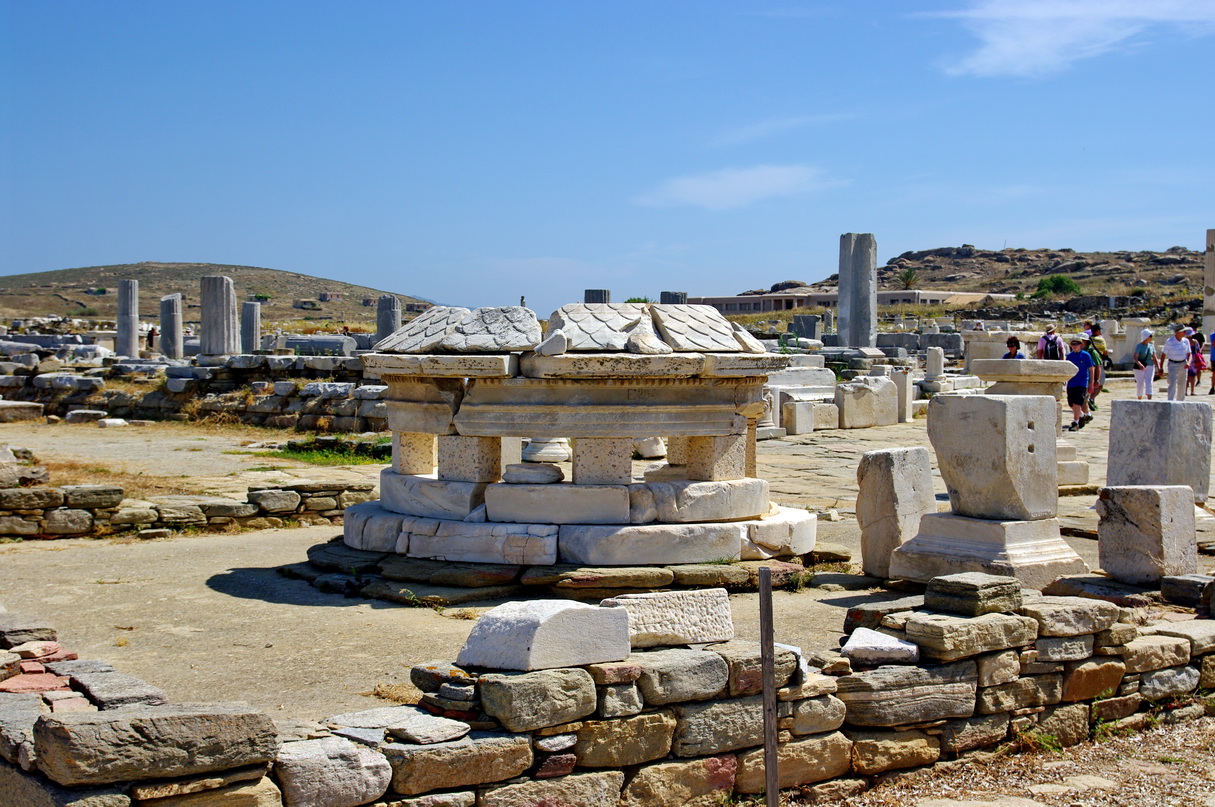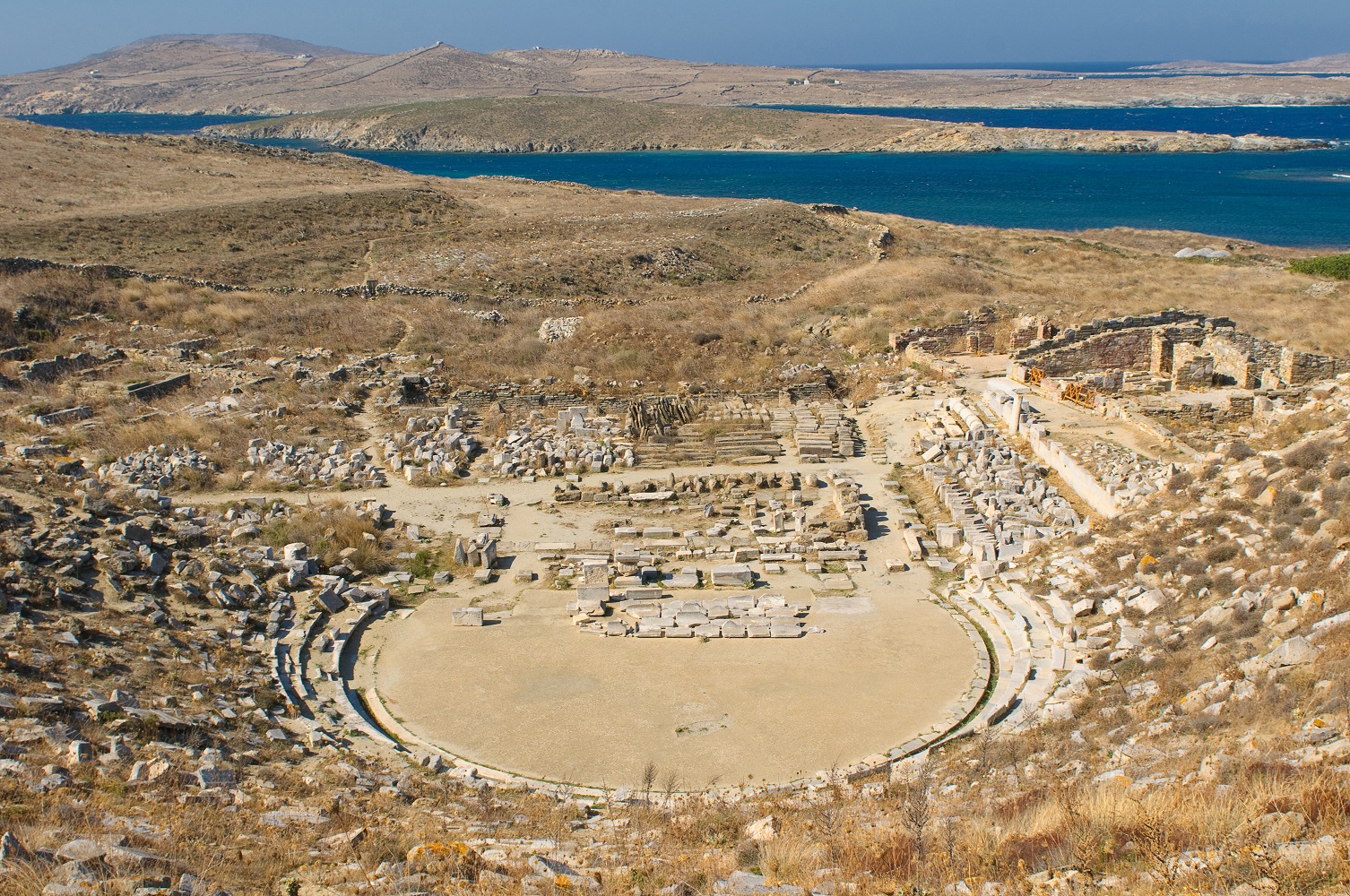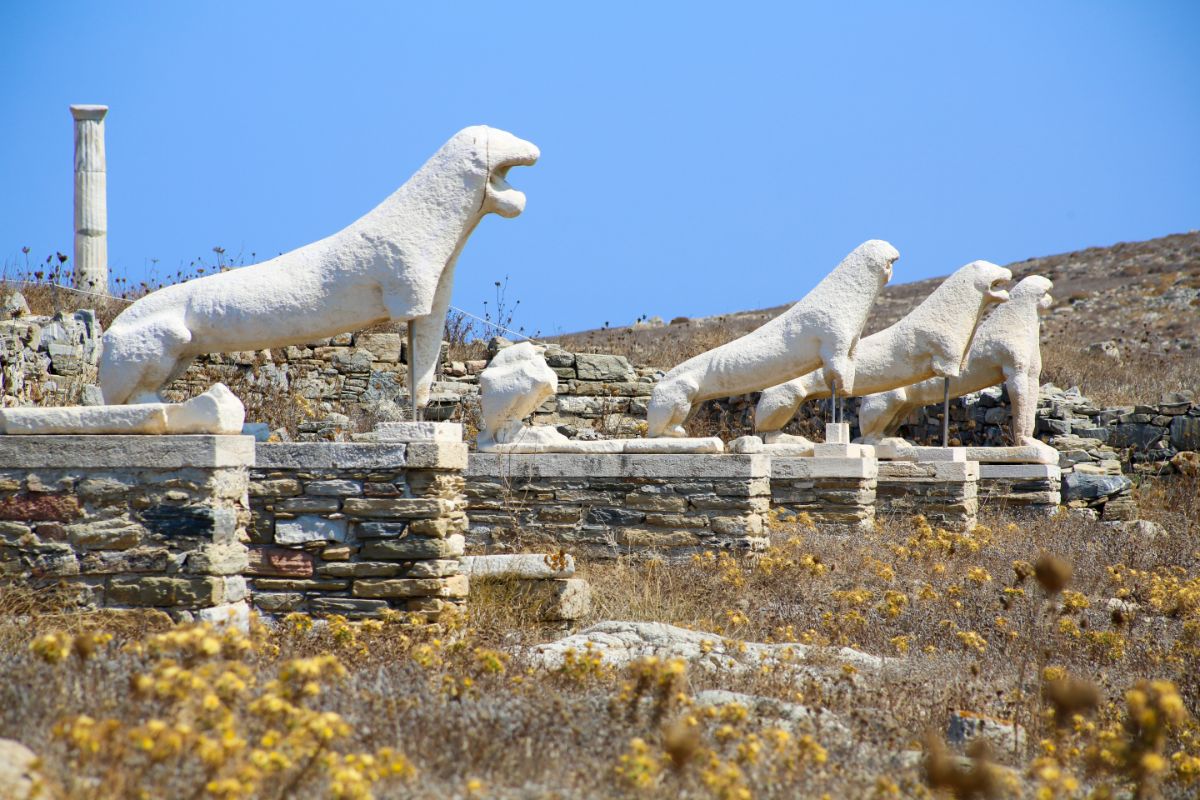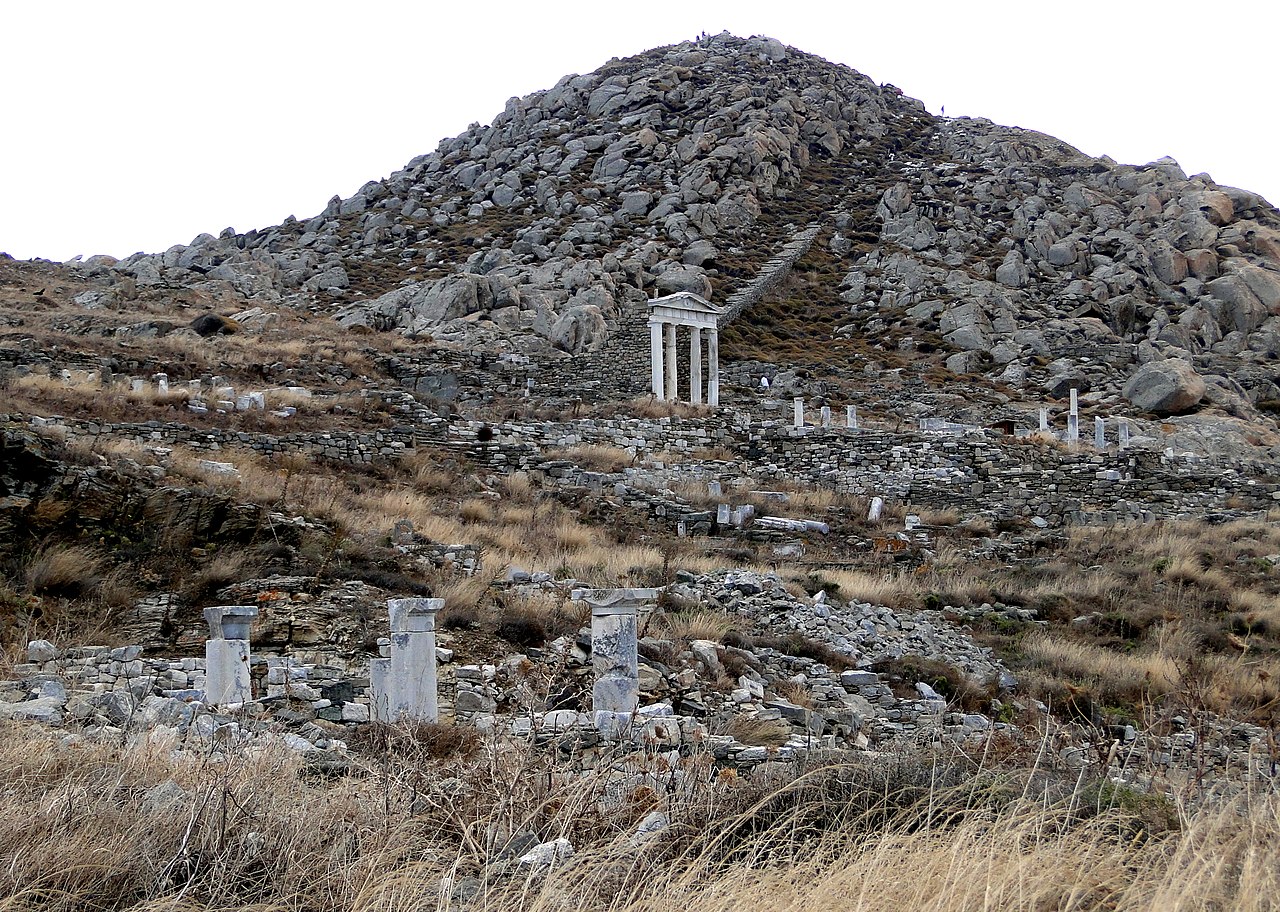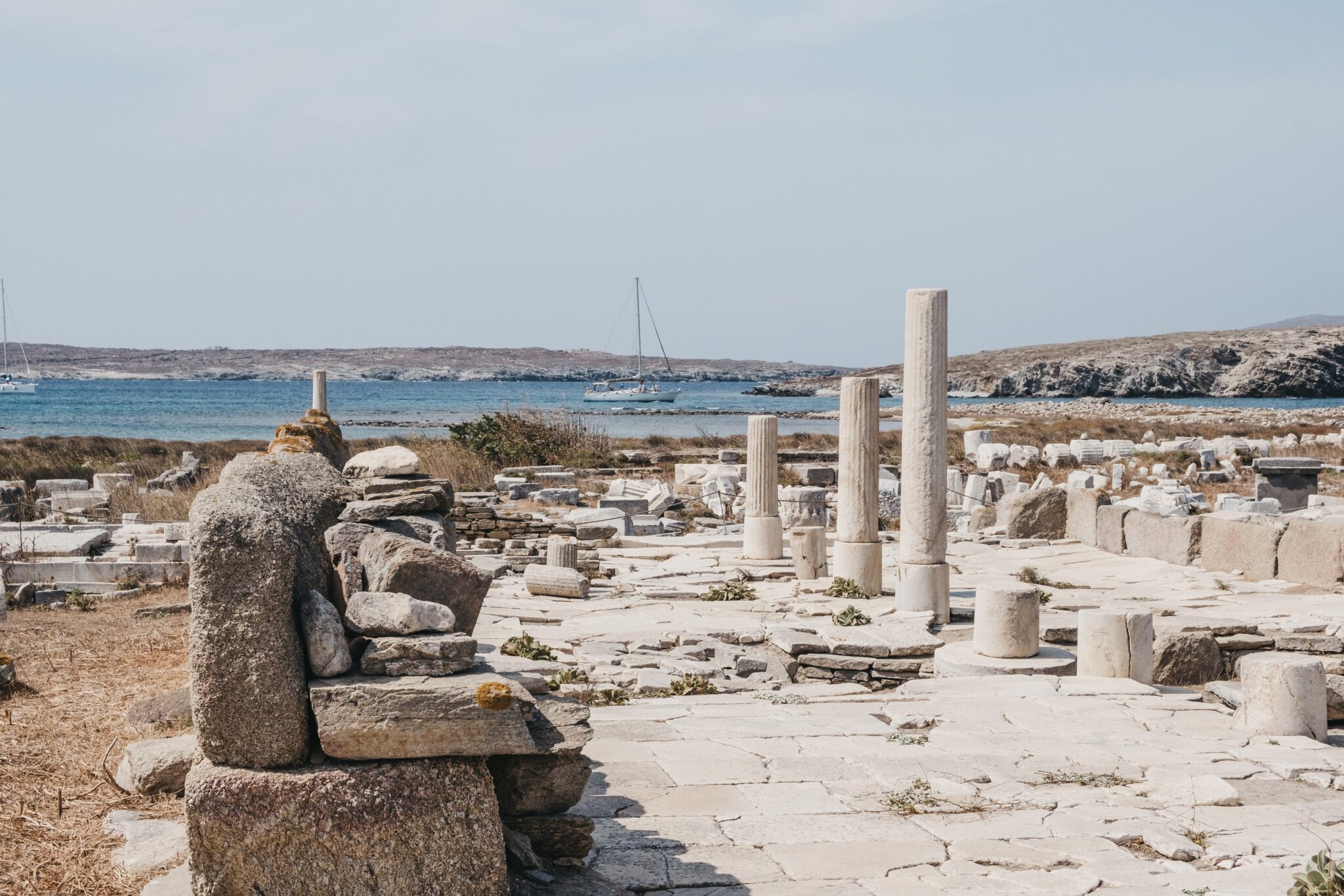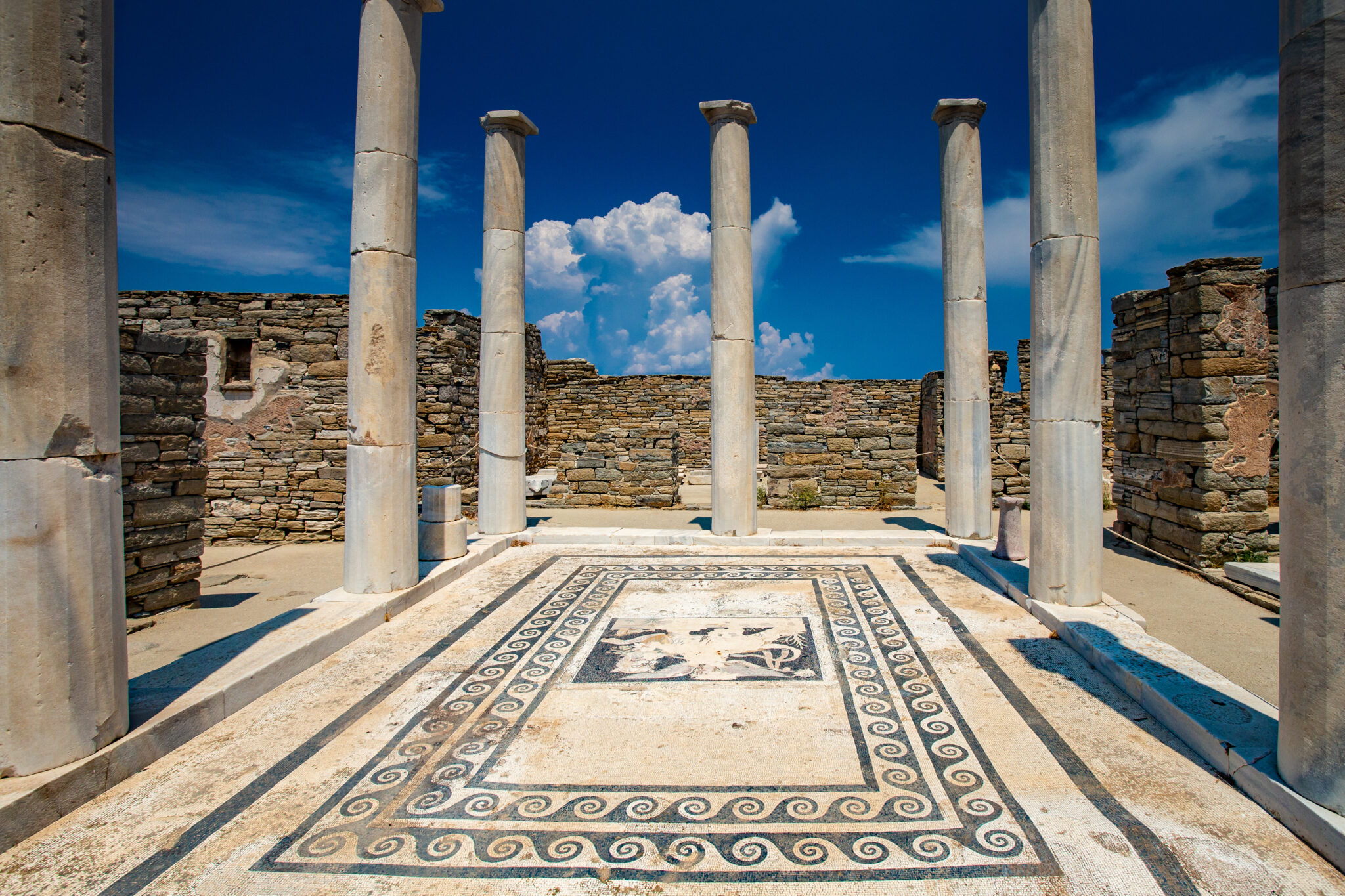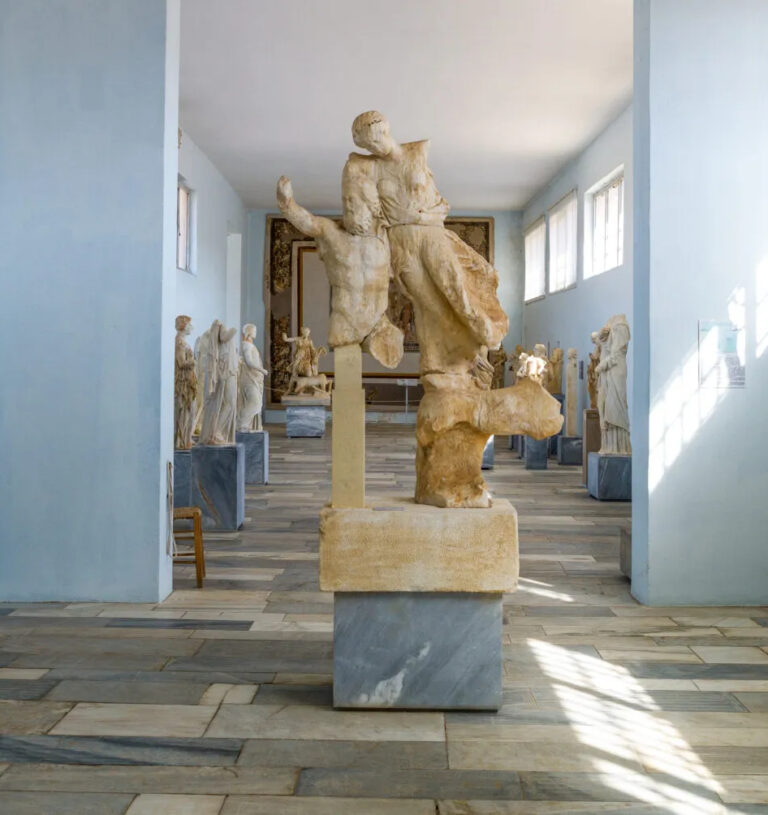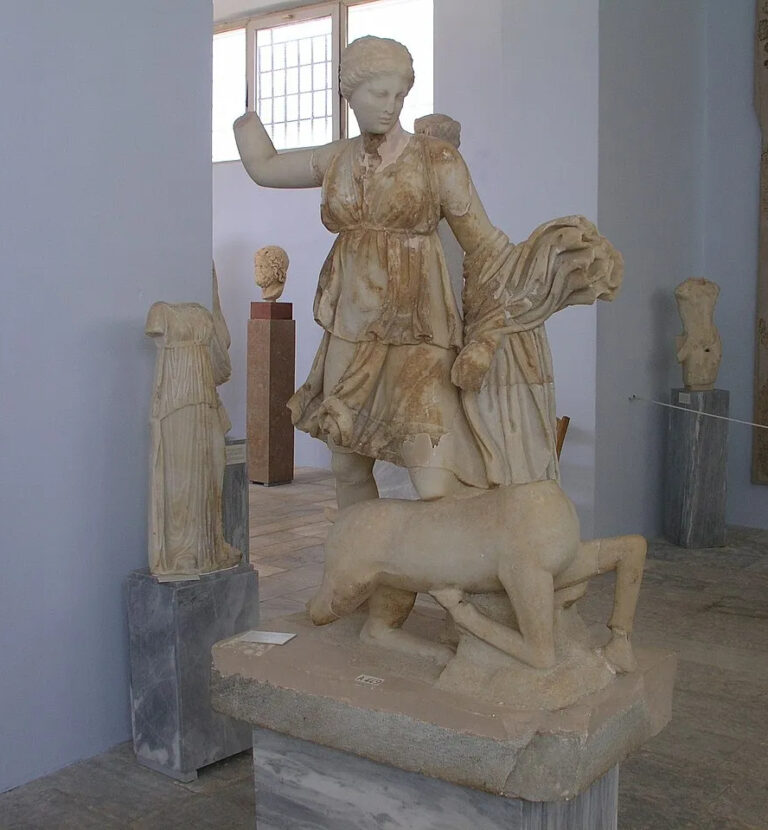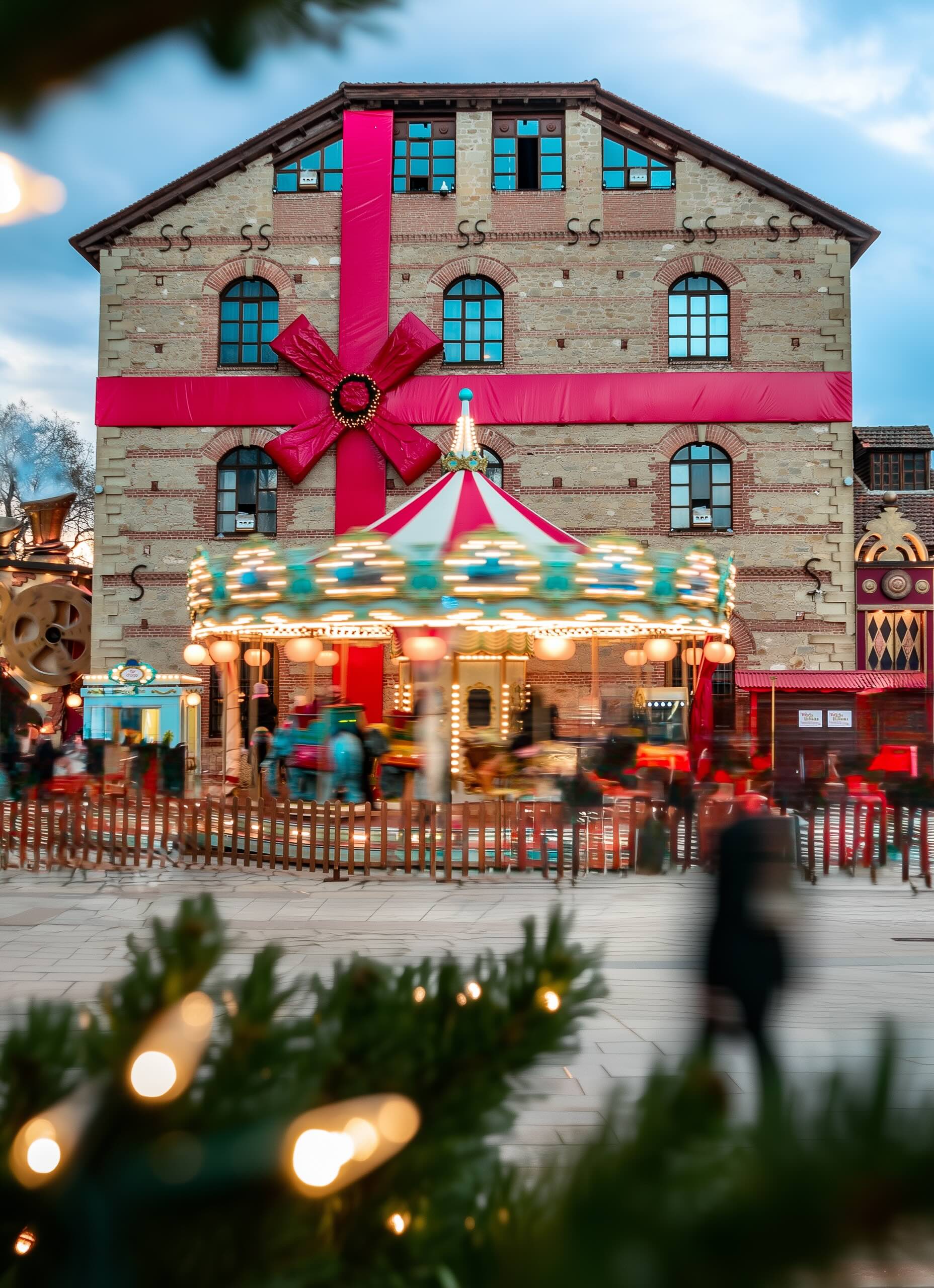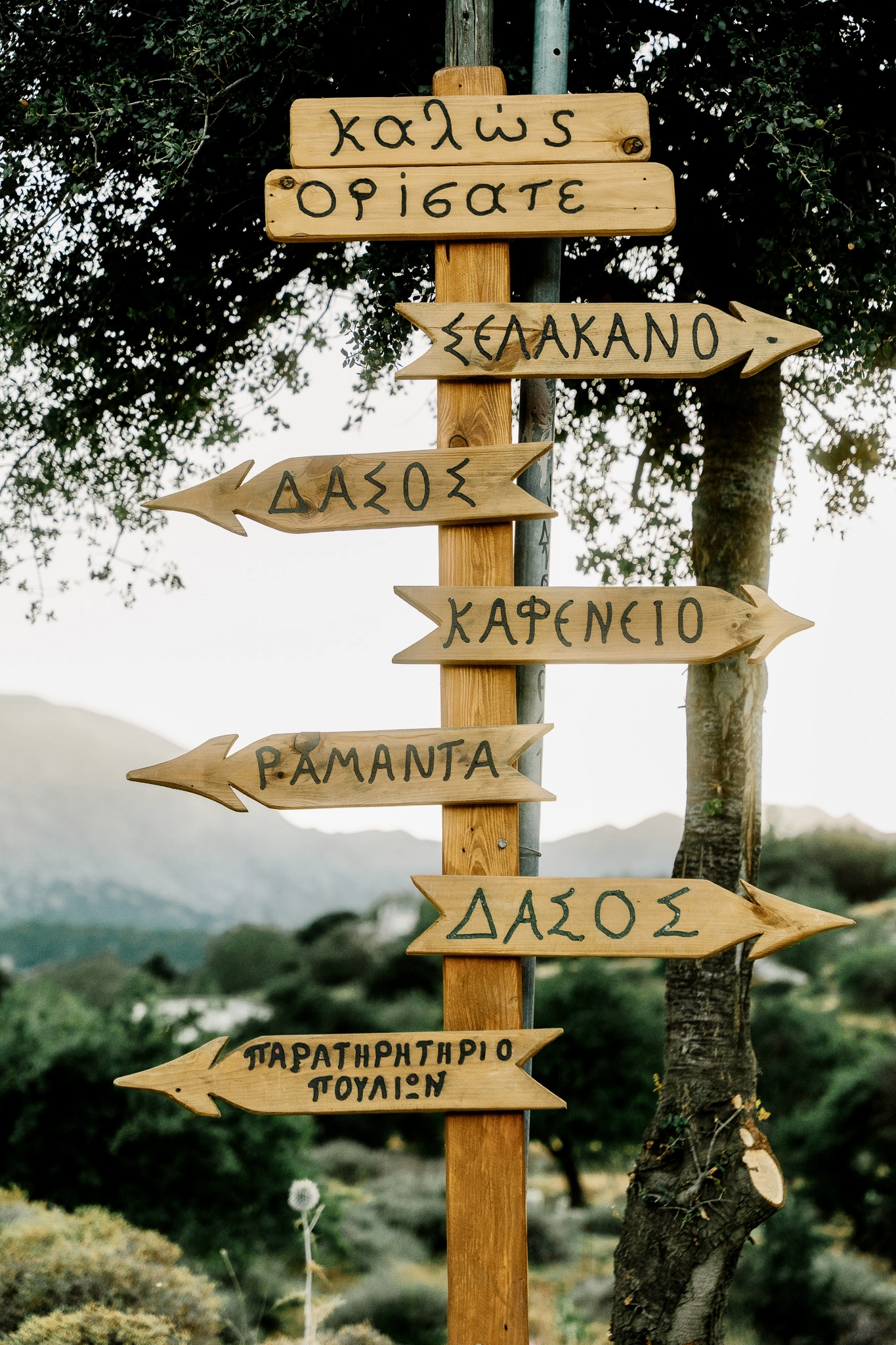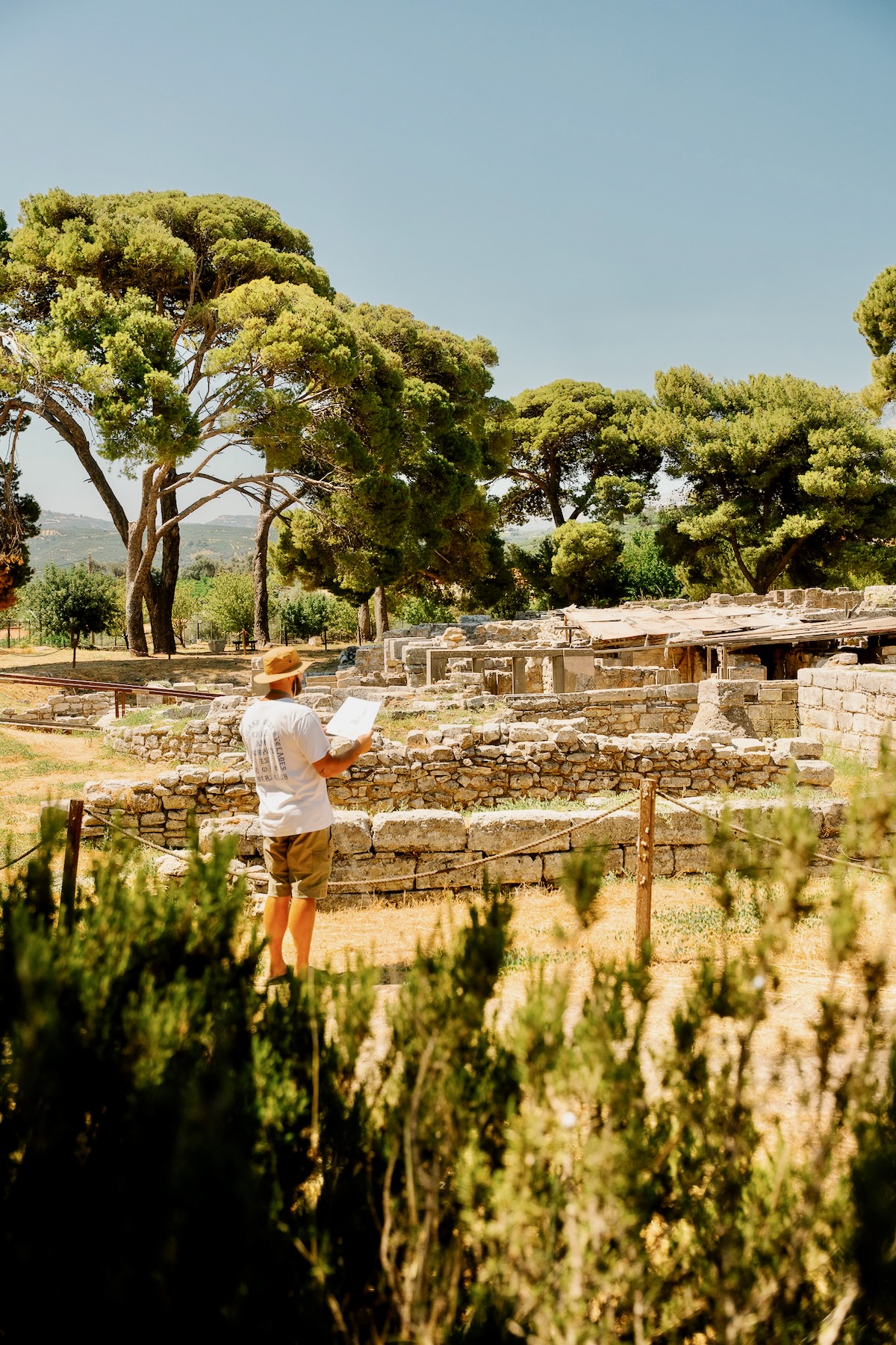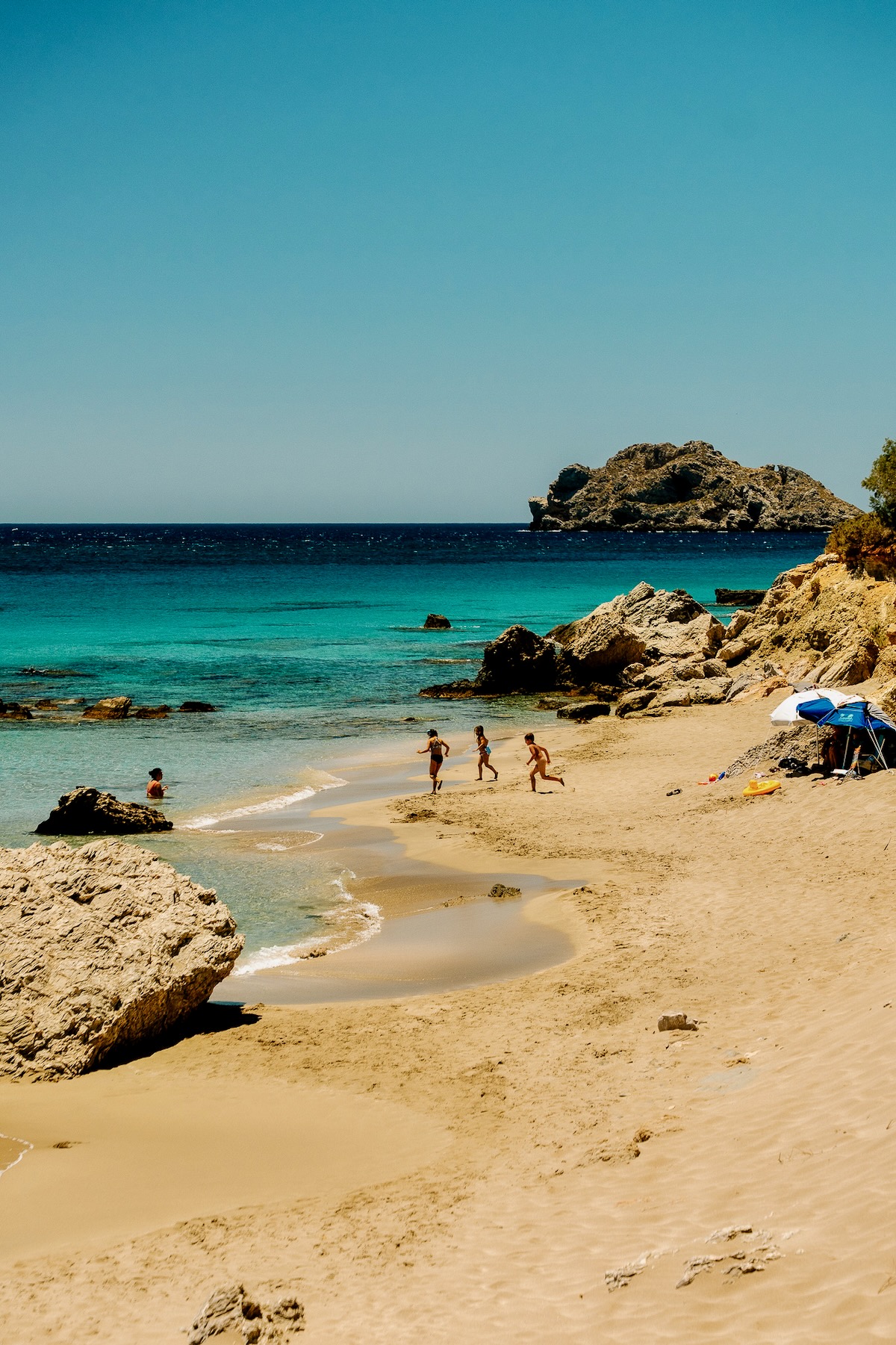This tiny 5 km long island was once considered the most sacred place in the known world and though uninhabited today, it is easy to imagine the ancient societies that thrived here. There are ruins of temples, houses, an amphitheatre, elaborate mosaics, and, of course, the venerated Avenue of the Lions. Climb the dusty, windswept path to the top of Mount Kynthos and admire the views of the surrounding islands that circle Delos, the true heart of the Cyclades.
The Agora of the Competaliasts
Built around 150 BC, the Competaliasts were members of Roman guilds, mostly freemen and slaves from Sicily who worked for Italian merchants. Right next to the harbour, the bases of many monuments dedicated to Hermes can be found in the main market of the ancient city. There is a distinctive main square with shops and an open-air market.
Ancient Theatre
Once housing 5,500 people, the construction of the Ancient Theatre began in 314 BC and was completed some 60 years later. The 26 rows of seats are well preserved, and the chosen location of the theatre lay within the elegant residential quarter, home to Roman bankers and Egyptian and Phoenician traders. The sophistication of the houses here paint a lively picture of domestic life in Hellenistic Greece. Rooms were grouped around a central courtyard with marvellous mosaic floors of panthers, snakes, birds and Dionysos visible. Precious rainwater was channelled into cisterns below and the well paved main street hosts the impressive House of Cleopatra, the House of Masks, the House of the Dolphins, and the striking House of the Trident.
Avenue of the Lions
One of the most evocative and distinctive sights on Delos, the 50 metre long Avenue of the Lions is home to five lions, faithful guardians of the Sacred Lake. Once home to at least nine and maybe up to sixteen lions, the avenue was erected and dedicated to Apollo by the people of Naxos around 600 BC. The lions with open mouths are snarling and growling, guarding the sanctuaries and inspiring fear and reverence in the worshippers.
Gymnasium
A square courtyard houses the gymnasium where teenagers scratched their names and those of their beloved into the soft rock. Next door is the stadium built in 274 BC where the Delian games where enacted every four years. East of the stadium and by the sea is the remains of a synagogue built by Phoenician Jews in the 2nd century BC.
Mount Kynthos
A rough path leads up from the base of Mount Kynthos, the highest point on the island, climbing 113 m to the top. On the slopes are the remains of shrines including temples dedicated to Egyptian gods and the Sanctuary of the Syrian gods built in 100 BC. The summit is completely unshaded and usually buffeted by the wind but the reward for the climb is awe inspiring views of Mykonos, Naxos, Paros, Syros and neighbouring islets. Take in the horizons and remember; this was the very centre of the ancient world.
The Sacred Lake
Visitors to ancient Delos landed not in the Sacred Harbour, yet to be constructed, but in the bay of Skardana instead. The route of entry first passed by the Sacred Lake with swans and palm trees and on under the watchful gaze of the lions to the Temple of Leto, and then further to the Sanctuaries of Artemis and Apollo. A stone wall marks the periphery of the now vanished lake, fed by the river Inopos until 1925 when the stagnant waters were drained after an outbreak of malaria. A lone palm stands in the middle of the lake, a poignant reminder of the legend of Leto.
The Sanctuary of Apollo
Three separate temples were built here, flanked by altars, statues and monuments. The Great Temple of Apollo was began in 476 BC with 6 columns on each short side and 13 on the longer. Inside was a statue of Apollo, while adjacent are the Oikos of the Naxians, the first superstructure in the world made of marble, and a massive pediment once housed the Colossus of the Naxians, a 9 m tall dedication to the god sadly broken into many pieces with the left hand in the Delos Archaeological Museum and a part of a foot in the British Museum.
The Sanctuary of Dionysos
Erected around 300 BC by Karystos, a winner of a theatrical competition, are several monuments decorated with phalluses, emblematic of the orgiastic festivities that took place on the island.
The Archaeological Museum of Delos
One of the most important museums in Greece, it presents findings of over a century of excavations by the French School of Archaeology. The most important sculptures cover a period from Archaic to Roman times and the Delos mosaics are the most significant discoveries of their kind in Greece from the 2nd-early 1st century BC. Nine rooms contain ancient pottery collections, figurines and astonishing frescoes and mosaics. The original lions are found here, while reproductions guard the avenue today. Important korous are displayed alongside an arresting statue of Boreas kidnapping Oreithya.
Temporarily closed there are plans to build a state of the art museum that the site deserves. Opening hours of the archaeological site: 08:30-15:00. It is forbidden to spend the night on Delos. (Tel. Archaeological museum: 22890 22259)
Boats run from the old port of Mykonos four times a day in summer and take half an hour. Expect to pay around 22€ for the boat and 12€ to enter the island site. Visitors to Delos are given a map outlining three self guided tours that take between ninety minutes and five hours. Guided tours are also available from 60€, and they can provide valuable insight into the fascinating history of Delos. There are no facilities on Delos so take refreshments, water and sunscreen. (Tel.: 22890 28603, www.delostours.gr)
Read also:
Delos: An island-landmark, one of the most important archaeological sites in Greece



